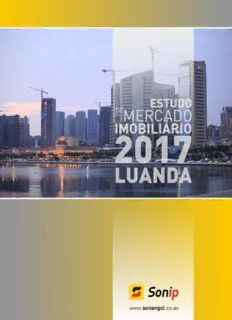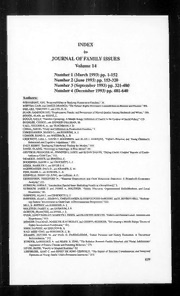
Preview After Irene: Adaptation, policy, and management
After Irene: Adaptation, Policy, and Management Middlebury College Environmental Studies Senior Seminar Spring 2012 Led by: Daniel Brayton & Diane Munroe Acknowledgements • Gretchen Alexander, River Scientist, Vermont DEC • Bob and Beth Kennett, Liberty Hill Farm, Rochester • David Mears, Commissioner, Vermont DEC • Todd Menees, River Management Engineer, Vermont DEC • Sue Minter, Deputy Secretary, Agency of Transportation, Irene Recovery Officer • Mary Russ, Executive Director, White River Water Partnership • Ned Swanberg, Flood Hazard Mapping Coordinator, Waterbury DEC • Ethan Swift, Watershed Coordinator at the VT ANR • Kristen Underwood, South Mountain Consulting • Joe Segale, Policy and Planning Manager for the VT AOT • James Leno, Hancock Road Commissioner • Larry Straus, Rochester Road Commissioner • Larry Lynds, Plymouth Town Foreman • Barbara Rabtoy, Plymouth Town Clerk • Cathy Curtis, Hancock Town Clerk • Joanne McDonnell, Rochester Town Clerk • Kathleen Byrne, resident of Hancock • Brian Woods, Climate Change Team, Agency of Natural Resources • Kate McCarthy, Sustainable Communities Director, Vermont Natural Resources Council • Noelle Mackay, Commissioner, Department of Economic, Housing, and Community Development • Gina Campoli, Senior Policy Analyst, Vermont Agency of Transportation • Kim Greenwood, Water Program Director, Vermont Natural Resources Council ii Table of Contents ACKNOWLEDGEMENTS ............................................................................................................................................ II 1. TINABTLREO ODF CUOCNTTIEONNTS .. ............................................................................................................................................................................................................................................................................ .I 1II 2. DOCUMENTING HISTORICAL CHANNEL MIGRATION OF TWO VERMONT RIVERS ...... 3 A. Vermont Before and After Irene ................................................................................................................. 3 I. PBR.O GJEeCoTm BoArCpKhGicR OImUNpDa c..t..s.. .o..f.. .H...i.s..t..o..r..i..c..a..l.. .M...a...n...a..g...e..m....e..n..t.. ............................................................................................................................................................ 33 C. Vermont River Management Program .................................................................................................... 8 D. Post Irene Management ............................................................................................................................... 10 II. PAR. TOJoEwCTn BSRelIEecFt ..i.o..n... .P...r..o..c..e..s..s.. ......................................................................................................................................................................................................................................................... 1 111 III.B M. CEToHstO-BDSe .n..e..f..i.t.. .A...n..a...l.y..s..i..s.:.. .A.. ..F..r..a...m...e...w...o...r..k.. .f.o...r.. .F..u...t..u..r..e.. .R...i..v..e..r.. .M....a..n...a...g..e..m....e..n...t.. .D...e..c..i.s..i..o..n...s.?.. ............................. 1 113 A. Liberty Hill Farm: Reach 20, Upper White River, Rochester VT ............................................... 21 IV.B C.A CSoEb SbTlUe DHIEilSl .S...t.a...b..l..e..:. .R...e..a...c..h.. .2...2...,. .U...p..p...e..r.. .W....h...i.t..e.. .R...i.v..e...r..,. .R..o...c..h...e..s..t.e...r.. .V..T... ........................................................................................... 2 209 C. Plymouth Notch: Black River, Plymouth, VT ....................................................................................... 32 D. Pingree Sugar Shack: Near Money Brook, Plymouth, VT ............................................................. 33 V. COOrNthCoL UMSIaOpN S ...o..u...r..c..e..s..:. .................................................................................................................................................................................................................................................................................. 3 358 VI. BIBLIOGRAPHY ................................................................................................................................................ 36 APPENDIX A: GLOSSARY ...................................................................................................................................... 39 APPENDIX B: RIVER MANAGEMENT WORK ESTIMATES ................................................................................ 40 3. DAPOPCEUNDMIXE CN:T HINISGTO RREICP AENADT R FECLEONOT DIM DAAGEMS AFRGOEM T FOLO TORDAINNGS IPN OPRLYTMAOTUITOHN, V T ................................ 43 INFRASTRUCTURE ................................................................................................................................ 46 I. INAT. RHOisDtUoCrTyI oOfN T ..r..a..n...s..p..o...r..t.a...t..i.o..n... .I..n..f..r.a...s..t..r.u...c..t..u..r..e... .a..n...d.. .i..t.s.. .R...e..l..a..t..i.o...n.. .t..o.. ..F..l.o...o..d...i.n...g.. .............................................................. 4 467 II. HB.I SMTOaRjoYr . ..F..l.o...o..d...s.. .i.n... .V..e...r..m....o..n...t.’.s.. .H...i..s..t.o...r..y.. ............................................................................................................................................................................................................ 4 478 C. Tropical Storm Irene ...................................................................................................................................... 52 D. Storm Discussion ............................................................................................................................................. 55 A. Town Selection Process ................................................................................................................................ 59 III.B C. ATSoEw SnT UInDfYo LrOmCaAtTioIOnN .. .......................................................................................................................................................................................................................................................................... 5 690 A. Origins of Flood Policy .................................................................................................................................. 63 IV.B G. ERNeEsRpAoLn PseO tLoIC IYr eDnISeC .U...S..S..I..O..N... .P...O...S..T..-..I..R..E...N..E... .................................................................................................................................................................................................. 6 634 C. State and Local Roads ................................................................................................................................... 66 D. Hazard Mitigation Grant Program ......................................................................................................... 66 E. FEMA Public Assistance ................................................................................................................................ 67 F. Funding Repeat Damage Mitigation ...................................................................................................... 68 A. Personal Communication ............................................................................................................................ 69 V. RBE. PDEaAmT aDgAeM RAeGpEo ArtSsS E...S..S..M...E..N...T... .D...A...T..A... .A...C..Q...U...I.S..I.T...I.O...N... .M....E..T...H...O..D...O...L..O...G..Y... ........................................................................................................... 6 790 C. Other Historical Documents ....................................................................................................................... 72 iii D. Policy Resources .............................................................................................................................................. 73 A. Compiled Damage Records ......................................................................................................................... 73 VI.B R. ESPeEleAcTt D EAxMamAGpEl eAsS oSEf SRSeMpEeNaTt FDIaNmDIaNgGeS f..r..o..m.... .M....a..p... ............................................................................................................................................................... 7 735 C. Discussion of Maps/Geographic Distribution of Repeat Damage ............................................. 78 D. Costs in Rochester and Plymouth ............................................................................................................ 79 E. Types of Damage ............................................................................................................................................. 81 A. Outline of Benefit-Cost Analysis and Applicability to this Study ............................................... 81 VIIB. B. VEaNrEiFaIbT-leCsO oSTf BAeNnAeLfYitS-ICSo ..s..t.. .A...n..a...l.y..s..i.s.. ................................................................................................................................................................................................................ 8 812 C. Examples .............................................................................................................................................................. 82 A. Streamline the Hazard Mitigation Grant Program (HMGP) ....................................................... 85 VIIBI.. T PhOiSnTk-iInRgE NBEe yPoOnLdIC tYh AeN NAaLtYiSoInS aAlN FDl oRoEdC OInMsMurEaNnDcAeT PIOrNoSg .r..a...m.... .(..N...F..I..P...). .................................................................................... 8 856 C. Record Keeping ................................................................................................................................................. 87 D. FEMAs Inundation Model and Fluvial Erosion Hazard (FEH) Zones ...................................... 88 A. Policy Outlook for the Future..................................................................................................................... 88 IX.B C.O TNhCeL UVSaIlOuNeS o AfN RDe IpMePaLt IDCAaTmIOaNgSe . .A...s..s..e..s..s..m....e..n..t.. .i.n... .R...e..l.a...t..i.o..n... .t..o.. .C...l.i.m....a...t..e.. .C..h...a...n..g...e.. .................................................... 8 889 X. BIBLIOGRAPHY .................................................................................................................................................. 91 APPENDIX A: ROCHESTER TOWN ROAD DAMAGE COSTS .............................................................................. 96 4. ABPEPHENADVIXIO BR: PS LAYNMDOU MTHO TTOIVWANT RIOOANDS D OAMF AVGEER ...M....O...N....T... .R...E...S..I..D...E...N...T...S... .I..N... .T...H....E.. .W.....A...K...E... . .............. 100 OF THE FLOOD ..................................................................................................................................... 103 I. INAT. RBOaDckUgCTroIOuNn d... .R...e..s..e..a...r..c..h.. ........................................................................................................................................................................................................................................................ . 110034 II. MB.E STuHrOvDeyO LaOnGdY I.n...t.e...r..v..i.e..w.... .D...e..v...e..l.o...p..m....e..n...t. ................................................................................................................................................................................................... .1 10046 C. Data Analysis .................................................................................................................................................. 107 III.A D. EPMsyOcGhRoAlPoHgIyC oS fO DF iFsOaCstUeSr A LRitEeArSa .t..u...r..e.. .R...e..v..i.e...w... .......................................................................................................................................................................... .1 10079 IV.B S.U SRuVrEvYe yD aEVnEdL IOnPtMerEvNiTew .... .Q...u...e..s..t.i..o..n...s. .................................................................................................................................................................................................................. 1 10192 Lawrence Jeffries, Echo Lake Inn Owner: Plymouth, Vermont (April 5, 2012) ..................... 115 V. ILNaTrErRyV LIEyWnd SsU, RMoMaAdR FIEoSr .e..m....a..n...:. .P...l.y...m...o...u..t..h...,. .V...e..r..m....o..n...t. .(..A...p...r.i..l. .5...,. .2..0...1..2...).. ........................................................................................ 1 11156 Betty and Bill Jarvi, Retired Residents: Plymouth, Vermont (April 5, 2012) .......................... 117 Michelle Pingree, Town Lister: Plymouth, Vermont (April 5, 2012) .......................................... 118 Caroline Meather, Librarian: Rochester, Vermont (April 12, 2012) .......................................... 118 Cathy Curtis, Town Clerk: Hancock, Vermont (April 12, 2012) ................................................... 120 Eric LaPorte, Recent Resident: Hancock, Vermont (April 12, 2012) ......................................... 121 Susan Mordecai, Teacher: Plymouth, Vermont (April 15, 2012) ................................................. 121 Sue and Al Poirier, EMS and Fire Department Volunteers: Plymouth, Vermont (April 17, 2012) .............................................................................................................................. 123 Beth and Bob Kennett, Liberty Hill Farms Owners: Rochester, Vermont (April 24, 2012) .............................................................................................................................. 124 A. Attachment to Current Residence ......................................................................................................... 125 VI.B A. NImALpYaScISt AoNnD L RocEaCUl ERRcoINnGo TmHyE ..M...E...S.. ...................................................................................................................................................................................................................... 1 12350 iv C. High Social Capital....................................................................................................................................... 132 D. Mixed Perspectives on Government Support ................................................................................... 135 E. Absence of Climate Change in Dialogue ............................................................................................. 140 F. Absence of Floodplain Awareness ......................................................................................................... 141 VII. CONCLUSION AND RECOMMENDATIONS. ................................................................................................ 142 VIII. BIBLIOGRAPHY .......................................................................................................................................... 145 5. ACPLPIEMNADITXE A C: SHTAONRIGEES FARDOMA PTHTEA MTIEODNIA I..N... .V...E...R...M.....O...N...T...:.. .W....I..T...H.... .A... .F...O...C...U...S.. .O....N... .............................. 148 TRANSPORTATION AND HOUSING ............................................................................................... 153 Tropical Storm Irene, A Wake Up Call ..................................................................................................... 153 I. INHTisRtOoDrUy CoTfI FOlNo:o Ad iCnAgL iLn T VOe ArCmToIOnNt. .I.N... .A... .P..O...S..T...-.I..R...E..N...E.. .E...N...V..I..R..O...N...M...E...N...T..................................................................................................... 1 15534 History of Climate Change Action in Vermont ..................................................................................... 155 Report Outline ..................................................................................................................................................... 157 II. PAO. TSTR-ATNROSPPIOCRALT SATTOIORMN IPROENLIEC IYM BPLRIICEAFT:I OCNliSm FaOtRe C ALdIMapAtTiEv eA PDoAlPiTcIyV fEo Tr RTArNaSnPsOpRoTrtAaTtIiOoNn POiLnIC PYo INst V-IEreRnMeO VNeTr .m....o..n...t..,. .M....a..y.. .2...0...1..2... .................................................................................................................................................................................................................... .1 15588 B. Climate Change Adaptation and Transportation ......................................................................... 160 C. General Climate Change Adaptation Recommendations for Transportation from Other States ............................................................................................................................................. 165 D. Risk Assessment and Implementation Framework from Other States ................................ 165 Why Adapt ............................................................................................................................................................ 165 E. Risk Assessment and Implementation Framework Already Existing in Vermont .......... 175 F. Transportation Conclusions .................................................................................................................... 187 III.A P. OHSOT-UTSRIONPGIC PAOL LSITCOYR BMR IIREEFN:E C IlMimPLaItCeA ATIdOaNpSt FivOeR P CoLlIiMcyA TfoEr A HDoAuPsTiInVgE iHnO PUoSsINt-GIr PeOnLeI C Y IN VVEeRrmMOoNnTt, .M....a..y... .2..0...1..2... ........................................................................................................................................................................................................................................................................... . 118888 B. Effects of Climate Change on Housing Infrastructure ................................................................. 190 C. General Recommendations ...................................................................................................................... 190 D. Risk Assessment and Implementation Framework ...................................................................... 193 E. Risk Assessment and Implementation Framework Specific to Vermont ............................ 201 F. Housing Conclusions ................................................................................................................................... 205 6. CONCLUSION .................................................................................................................................... 206 v 1. Introduction On August 28, 2011, Tropical Storm Irene hit Vermont. Four to eight inches of rain rapidly fell throughout the night with the greatest precipitation in towns on the eastern side of the Green Mountains. Rivers like the Mad, only a small creek the day before with a flow of 100 cubic feet per second, jumped its banks and surged to a flood level of 23,000 cubic feet per second, or twice the flow of the Colorado River through the Grand Canyon. The massive and widespread destruction brought by these record floodwaters along Vermont’s creeks and valley bottoms was only comparable to the Great Flood of 1927. More than 500 miles of road and 200 bridges were wiped out, a dozen communities were entirely isolated and over 1,600 homes were damaged and 700 completely destroyed. At great price, Irene exposed Vermont’s vulnerability to disasters of this nature. The emergency response in the aftermath of Irene, however, was an incredible testament to the strength of Vermont’s communities and to the ability for this state to turn devastation into restoration; vulnerability into resilience. As the state enters an increasingly uncertain future in the context of already-induced global warming, it will be these qualities that guarantee a future of transformation; of rethinking our relationship to rivers, and to each other. Flooding is already the most frequent, damaging, and costly natural hazard experienced in Vermont. Climate change models, however, show that this hazard will increase in frequency, as Vermont becomes a wetter state. It was previously thought that a storm the size of Irene was the hundred-year storm. This does not mean that a storm of this size will come every 100 years, but means that each year there is a 1% chance of a storm of this scale. Recent studies have found that this probability is more realistically 33% to 5% when climate change is considered. Irene could be the new three to twenty-year storm. The following report presents the methodologies and findings of the Middlebury College Environmental Studies Senior Seminar in the Spring of 2012, entitled “After Irene: Adaptation, Policy and Management.” The report will open with an exploration of historic river management practices and their compatibility (or incompatibility) with a rapidly warming world. A cost- benefit analysis was applied to Liberty Hill Farm in Rochester Vermont as a framework to assess the long-term, repeated costs of river modifications and to estimate the costs of different management options. A repeat damage assessment of transportation networks in Rochester, 1 Hancock and Plymouth follows, in order to explore ideal policy measures for areas increasingly vulnerable to flood damage. The assessment has been nested in current and future climate projections for the state, as well as funding availability (from both the state and federal government). Using the technical assessments and recommendations of this report’s opening chapters as a launching point, the third chapter will explore the sociological and psychological implications of Tropical Storm Irene. After conducting a literature review of psychological and sociological research on the behavior and motivations of floodplain residents, a survey was designed and disseminated to residents in Hancock, Rochester and Plymouth. A summary of findings regarding the salience of climate change among floodplain residents, their likelihood of relocating and perceptions of interactions with government officials has been included. To conclude, this report will propose policy recommendations regarding the adaptation of housing and transportation infrastructure, drawing on the wealth of knowledge at the state and federal level. Ultimately, this work stems from the belief that despite Vermont’s obvious leadership on questions of climate change mitigation, adaptation will be necessary in the context of already induced warming. Vermont also needs to understand risk as a largely human creation—as something that can be either exacerbated or diminished through public policy, community planning, and individual action. We hope that this work will prove useful to communities, policy makers and individuals across the state as they attempt to transform our state after Irene. 2 2. Documenting Historical Channel Migration of Two Vermont Rivers Zach Doleac, Wyatt Komarin, Mark Little, Jen Liu, Leah Nagel, Devin Perkins I. Project Background A. Vermont Before and After Irene On August 28, 2011, Tropical Storm Irene picked up water vapor from the Atlantic Ocean, created multiple thunderstorms and resulted in heavy rains and high winds in the Northeastern United States, specifically in Vermont. The storm dumped 8.5 inches of rain in Rochester and 7 inches in Plymouth (NOAA 2011), causing massive flooding throughout the state that destroyed homes, washed out roads and left a dozen towns completely isolated. The destruction that Irene left in its wake has served as a wake-up call for many by highlighting the vulnerability of much of Vermont’s infrastructure to flooding and other natural hazards. Much of this vulnerability comes from the fact that many roads, houses and agricultural lands are located next to rivers, in floodplains and near the confluence of steep mountain streams and valley floors. In many cases, that vulnerability is exacerbated by attempts to protect upstream infrastructure located near sensitive river channels. These upstream modifications to the river channel are designed to keep the river in a human-designated area. B. Geomorphic Impacts of Historical Management Traditionally, river management practices have focused on keeping rivers in their historical (often human-altered) locations and preventing potential erosion or floodplain access (Kline 2010). Any changes in river behavior or position from these locations were treated as inherently negative, and as a result consideration of science-based and river-minded management was impossible and containment practices such as dredging and bank armoring were encouraged. These practices, however, can have unintended consequences. Throughout Vermont’s history, river management has been a constant, ongoing process. Rivers were moved around to power mills and make way for farmlands, dredged after floods choked channels with sediment and armored to prevent erosion damage to property and infrastructure. However, in recent decades the science of stream geomorphology, or the study of 3 the natural tendencies of rivers, has shed light on the unintended consequences of these practices through a greater understanding of river dynamics. Stream channels—their width and depth, meander pattern, and slope—reflect an array of variables including water flow, the transfer of sediment and debris, and the valley type within which the stream is located (River Management Program 2004). If conditions are stable for a long time, a river that is just wide, deep, and long enough to transport the water and gravel produced in its watershed will remain stable, with minimal erosion and movement even in flood events. However, changes in conditions within the watershed that alter inputs (e.g. deforestation leading to increased erosion) or the shape of the river channel (e.g. straightening or dredging), will cause the river to adjust until it reaches a new stable state resulting in increased erosion and changes in depositional patterns and stream course (Figure 1a) (River Management Program 2004). Because these adjustments often conflict with human infrastructure, the adjustment process (e.g. bank erosion) is often arrested and can exacerbate the initial problem (e.g. an incised channel) and create a constant cycle of alteration where the river is never able to reach a new stable state (Figure 1b). Figure 1a. The adjustments that occur Figure 1b. As management practices are post-streambed incision in an unmanaged installed to prevent bank failure, lateral stream as it attempts to re-attain a stable erosion is prevented and only the state. Incision results in lateral erosion and streambed is vulnerable to erosion, further eventual bank failure, followed by incising the channel and continuing the stabilization. cycle. Sou rce: image adapted from http://www.fairfaxcounty.gov/nvswcd/new sletter/enjoyrestorestreams.htm 4 The alterations mentioned above all have impacts on stream dynamics through changes to different aspects of the river corridor (Appendix A). Straightening a river corridor to make room for farms and roads can have several unintended consequences. Straightening leads to an increase in the slope of the stream by shortening the length of the stream over a given elevation gradient. This leads to an increase in flow velocity and therefore channel erosion (EPA 2005). Another side effect of this increased velocity and erosion is increased downstream sedimentation, as the faster-moving water erodes more and is less able to deposit sediment (Brooker 1985). This condition is exacerbated by the absence of meander bends, which decrease the velocity of the water and also increase the ability of a stream to absorb flood damage (EPA 2005). A second management practice that often goes hand in hand with straightening is dredging. Dredging to remove sediment, whether for gravel extraction or to protect land use investments, alters the dimensions and streambed composition of the river and increases the amount of additional sediment that the river is capable of transporting, often resulting in a net loss of soil and nutrients from a watershed (Kondolf 1997, Kline and Cahoon 2010). Where dredging prevents floodplain access and therefore increases the flow of water within the channel, it increases the stream’s power and therefore its capacity to transport materials—or in other words, the stream’s capacity to erode its channel (River Management Program 2004). By altering streambed composition and fundamentally changing the geomorphology of the stream, dredging can also have significant detrimental impacts on water quality and on aquatic communities, through increased sedimentation, the degradation of spawning habitat for economically important fish, species and changing food availability for stream macro-invertebrates (Kondolf 1997, Brown et al. 1998, Kline 2011). Further, these impacts are not simply limited to the particular location of human alteration; dredging can result in bed degradation upstream as the river adjusts its slope and increased sedimentation downstream resulting from the increased erosion mentioned above. According to stream geomorphic assessments (Appendix A) carried out throughout the state, nearly three quarters of Vermont streams are incised to the point where the stream can no longer reach its natural floodplain, triggering the impacts listed above and additionally preventing important ecosystem services including flood mitigation and nutrient uptake (Kline and Cahoon 2010). 5
The list of books you might like

What Happened to You?

The Silent Patient

The 48 Laws of Power

As Good as Dead

Secret of the Ring Muscles

Two new species of Scelimenidae from Hainan Province (Orthoptera:Tetrigoidea)

2007 Chevrolet Equinox Owner Manual

Cities in South Asia

Estudo do mercado imobiliário em Angola

Carolina football

Como lidar com a sogra

Greek Government Gazette: Part 1, 2006 no. 75

Journal of Family Issues 1993: Vol 14 Index

Harry Joscelyn vol 3 by Mrs Oliphant

Appearing List of BBA (G)

The Drosophilidae (Diptera) of Estonia

call for proposals for transnational actions on social experimentation

Journal of Electroanalytical Chemistry 1993: Vol 351 Table of Contents

Player's handbook

Social Rights and Duties Volume I of 2 by Sir Leslie Stephen

Byways in British Archeaology byWalter Johnson



